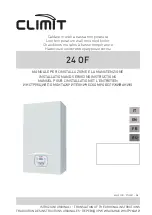
Energy density of various fuel types compared with fuel oil (standard values)
Tip/
Stack density
Fuel oil equivalent
kilogram
Fuel oil equivalent
litre
840 kg/m³
0.84 kg
1.00 l
Fuel oil
860 kg/t.m³
1.28 kg
1.49 l
Anthracite
650 kg/t.m³
2.16 kg
3.33 l
Wood pellets
459 kg/t.m³
2.35 kg
5.11 l
Beech logs
297 kg/t.m³
2.30 kg
7.73 l
Spruce logs
217 kg/t. m³
2.25 kg
10.36 l
Woodchips
1.2 Principles of pellet combustion for generating heat
What are wood pellets?
Wood pellets are made from 100 percent natural wood remnants. This
raw material is waste matter generated by the wood processing indus-
try in large amounts through planing or sawing. Wood remnants are
compressed under high pressure and formed into pellets, i.e. they are
pressed into a cylindrical shape.
The raw material is stored and transported under completely dry con-
ditions. System users should also ensure completely dry storage con-
ditions. This is the only way to guarantee optimum and effective com-
bustion.
Pellet requirements
For combustion in the Vitoligno 300-H, use pellets with a diameter of
6 mm, a length from 5 to 30 mm (20 % up to 45 mm) and a maximum
residual moisture content of 10 %.
The pellets used for combustion in the Vitoligno 300-H must comply
with DIN
plus
, EN
plus
-A1 or ÖNORM M 7135 [or local regulations].
Principles of wood combustion
(cont.)
6
VIESMANN
VITOLIGNO 300-H
1
5672 507 GB







































